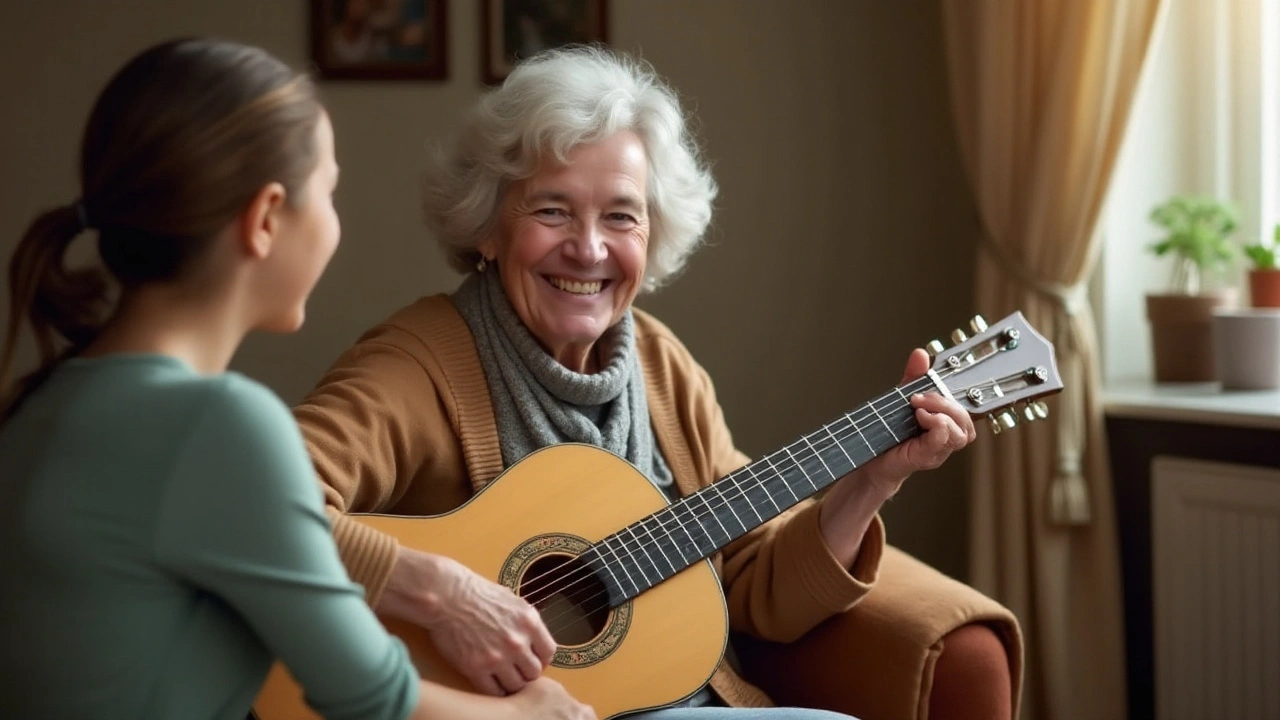Music Therapy for Alzheimer's — September 2024 Archive
This month we focused on music therapy as a simple, practical way to help people with Alzheimer's. The main post explains specific techniques you can try right away, what the research says, and how caregivers can make sessions more effective. If you care for someone with dementia, you’ll find step-by-step ideas — not just theory.
How to use music therapy at home
Start by learning the person’s music history. Ask family members about favorite songs, singers, or radio stations. Create short playlists of familiar songs that match key life periods — teens, early adulthood, or popular hits from their hometown. Keep each playlist to 20–30 minutes so it’s easy to repeat and measure responses.
Use two basic approaches: receptive and active. Receptive means listening together — use good speakers or headphones and watch for changes in mood, eye contact, or body language. Active means singing, humming, simple percussion, or dancing if safe. For active sessions, choose easy actions like clapping, tapping a drum, or shaking a maraca. Instruments don’t have to be fancy; everyday items work fine.
Pay attention to tempo and emotion. Slower songs can calm agitation; upbeat songs can spark movement and smiles. Match the tempo to the goal: calm for evening care, lively for morning engagement. Avoid songs that might trigger sadness — watch reactions and switch tracks if the person becomes upset.
Keep sessions short and regular. Aim for 10–30 minutes once or twice a day. Track what works: note songs that prompt singing, moments of clear memory, or reduced restlessness. Over time, you’ll build a personal music plan that fits routines like mealtime or grooming.
What research shows
Recent studies and clinical reports published this month confirm that personalized music can reduce agitation and improve mood in people with Alzheimer’s. Research looking at playlists tailored to life history shows better engagement than generic music. Other trials found that group singing and rhythmic activities can boost social interaction and lessen feelings of loneliness.
Music isn’t a cure, but it’s low-risk and often produces quick, visible benefits. When a certified music therapist is available, they add structure and assessment tools that help measure progress. At home, simple tracking — a short daily note on mood and behavior — helps prove whether a playlist is helping.
If you want to try this month’s full guide, read the detailed post on techniques and sample playlists. Small steps — a familiar song, a short session, a simple instrument — can change how a person with Alzheimer’s connects and feels during the day.
Effective Music Therapy Techniques for Alzheimer’s Disease Treatment
Music therapy is increasingly being recognized as a valuable tool in the treatment of Alzheimer’s disease. By engaging patients through rhythms and melodies, significant improvements can be seen in memory, mood, and overall cognitive function. This article dives into the scientific backing, techniques, and real-life benefits of music therapy in dementia care.

